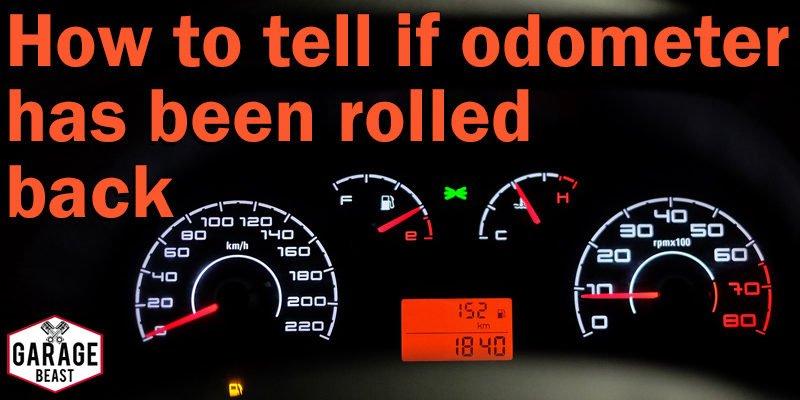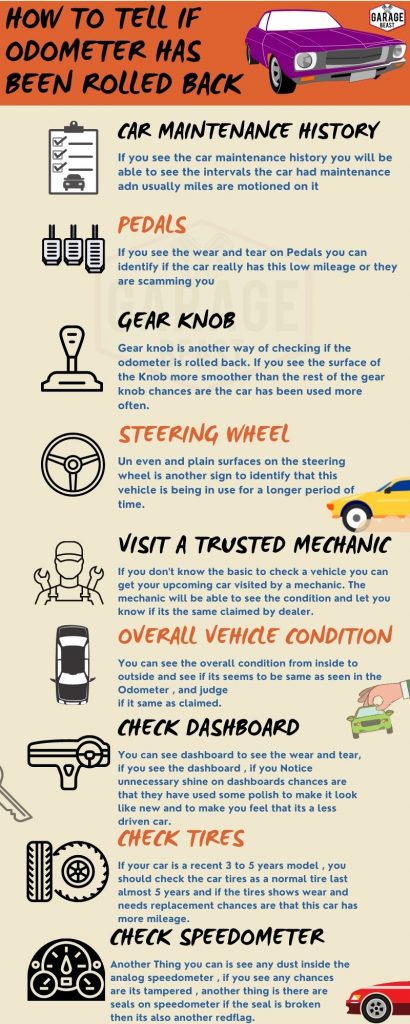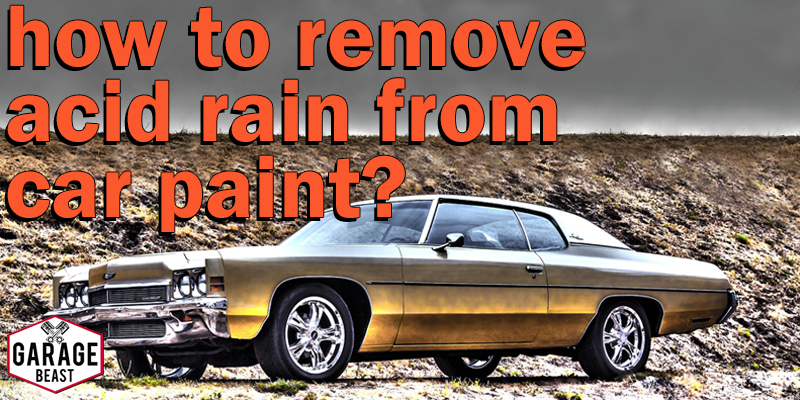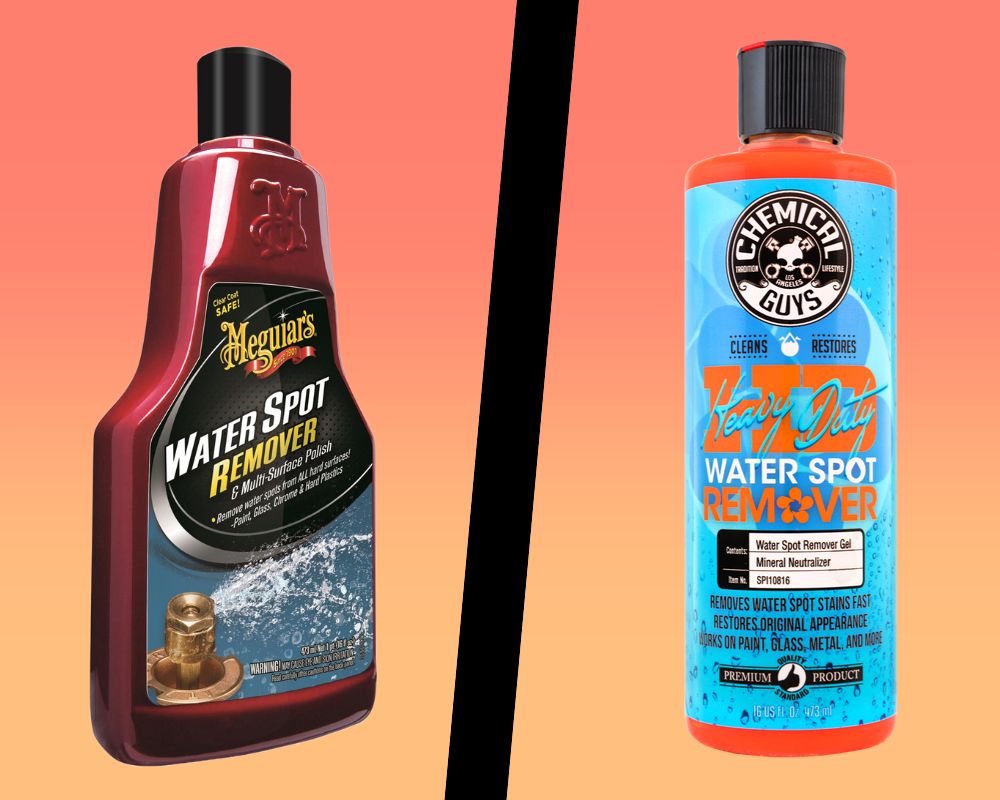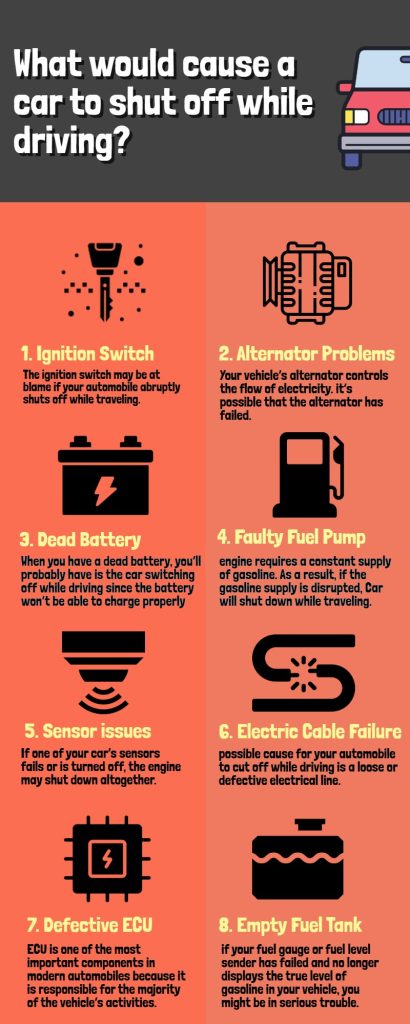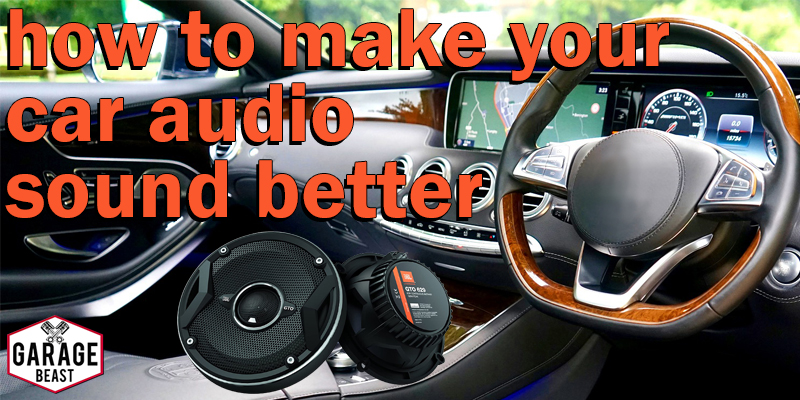Today we will be discussing, How to Fix a Catalytic Converter without Replacing A comprehensive guide.
Fixing a damaged catalytic converter can be an expensive.
However, it is possible to repair a faulty catalytic converter without replacing it entirely, which can save you a significant amount of money in the long run.
In this article, we’ll provide you with some helpful tips and steps on how to fix a catalytic converter without replacing it.
With the right tools, knowledge, and a bit of elbow grease, you can get your car back on the road and reduce your environmental impact without breaking the bank.
Before this we will discuss the importance of Catalytic convertor, then will come straight to the solution.
What a catalytic converter is and why it is important
As much as you love the sound of a your engine roaring, you should also care about the environment. That’s why we need to talk about catalytic converters.
Now, I know what you’re thinking, “oh great, here comes the green brigade.” But bear with me, because this is important.
You see, a catalytic converter is a vital component in modern vehicles that helps to reduce the harmful pollutants emitted by the engine.
It’s like a superhero for the environment. When the exhaust gases pass through the converter, it uses a combination of heat and catalysts to convert harmful gases like carbon monoxide, nitrogen oxides, and hydrocarbons into less harmful substances such as carbon dioxide, nitrogen, and water vapor.
Why is this important, you may ask? Well, let me tell you. The emissions produced by vehicles can cause serious health problems for humans, such as respiratory problems, and contribute to environmental problems, such as smog and climate change.
By reducing these emissions, catalytic converters help to protect the environment and public health.
But that’s not all. A properly functioning catalytic converter can also improve the overall performance of a vehicle.
It helps to ensure that the engine is running efficiently, leading to better fuel economy and engine power. And let’s be honest, who doesn’t want more power under the hood?
Now, I know some of you may be thinking about removing your catalytic converter to get more power out of your engine.
But let me tell you, that’s a bad idea. First of all, it’s illegal in most countries, and you can face significant fines or legal penalties if caught.
Plus, removing your catalytic converter can lead to reduced fuel economy, decreased engine power, and even engine damage.
So, in conclusion, a catalytic converter may not be the most exciting part of your car, but it’s certainly one of the most important. It helps to protect the environment, public health, and even improves your car’s performance.
So, next time you hear that purring engine, just remember the important role your catalytic converter is playing behind the scenes.
Different Ways to Fix a Catalytic Converter without Replacing It
Now lets come straight to the point, what are the different ways on How to Fix a Catalytic Converter without Replacing it.
we’re going to talk about an often-overlooked part of your car’s exhaust system: the catalytic converter. Now, you may be asking yourself, “Why should I care about this boring old piece of metal?” Well, I’ll tell you why.
Over time, your catalytic converter can become clogged with carbon buildup, which can lead to reduced performance and fuel efficiency.
But fear not, my friends! With a few simple steps, you can clean your catalytic converter and restore your car’s power and efficiency. So, grab your toolbox and let’s get started!
Step-by-step instructions on how to clean the catalytic converter
- Park your vehicle on a level surface and allow the engine and exhaust system to cool down before beginning the cleaning process.
- Remove the catalytic converter from your vehicle by unbolting it from the exhaust system. It may be necessary to cut the exhaust pipe to remove the converter.
- Soak the catalytic converter in a cleaning solution specifically designed for this purpose. These solutions are available at most auto parts stores.
- Allow the catalytic converter to soak in the cleaning solution for the recommended time period, usually around 30 minutes to an hour.
- Rinse the catalytic converter thoroughly with water and allow it to dry completely.
- Reinstall the catalytic converter back onto your vehicle and bolt it securely into place.
- Start your engine and allow it to run for a few minutes to ensure that the catalytic converter is functioning properly.
It’s important to note that cleaning the catalytic converter this way is not always a guaranteed solution to fix all problems.
Car manufacturers does not recommend this way but these steps are usually tried by many DIY guyis.
If your catalytic converter is severely damaged or clogged, it may need to be replaced instead of cleaned.
Materials required to Clean the Catalytic convertor
- Gather the necessary materials: You will need a pressure washer or a garden hose, a cleaning agent (such as baking soda or commercial cleaner), a bucket, a funnel, and safety goggles.
- Locate the catalytic converter: The catalytic converter is usually located between the engine and the muffler. It is a metal canister with pipes on either end.
- Remove the catalytic converter: The converter may be held in place by bolts or brackets. Remove any mounting hardware and detach the converter from the exhaust system.
- Soak the catalytic converter: Place the converter in a bucket filled with a cleaning agent or any other liquid soap or you can use WD40 before soaking too and let it soak for at least 30 minutes. This will help to dissolve any built-up carbon and debris.
- Rinse the catalytic converter: Use a pressure washer but from a little far to make the pressure less harsh or you can use a garden hose to rinse the converter thoroughly. Make sure to remove all of the cleaning agent and debris.
- Dry the catalytic converter: Allow the converter to air dry completely. Do not use any heat source to speed up the drying process, as this could damage the converter.
- Reinstall the catalytic converter: Once the converter is completely dry, reinstall it onto the exhaust system using the original mounting hardware.
- Test the catalytic converter: Start the engine and check for any leaks or abnormal sounds. If everything sounds and looks normal, you have successfully cleaned your catalytic converter.
Remember to always follow the manufacturer’s instructions and safety guidelines when using any cleaning solution or tool.
Precautions to take when cleaning the converter
Cleaning the catalytic converter is a delicate process that requires certain precautions to be taken to avoid damaging the converter.
Here are some precautions to keep in mind when cleaning the converter:
- Wear gloves and protective clothing: Catalytic converter cleaners can be corrosive and harmful to your skin. It is recommended that you wear gloves and protective clothing to avoid any contact with your skin.
- Work in a well-ventilated area: Catalytic converter cleaners can emit harmful fumes that can cause dizziness, headaches, and nausea. It is important to work in a well-ventilated area, preferably outdoors.
- Use the right cleaner: while using the cleaner check if how it is with its degreasing ability and can clean properly.
- Let the engine cool down: Before cleaning the converter, ensure that the engine has cooled down completely. This is to prevent any burns or injuries.
By following these precautions, you can effectively clean your catalytic converter without damaging it and ensure that it performs optimally.
Using Catalytic Converter Cleaner
How catalytic converter cleaner works
Now, you might be wondering how on earth this liquid can bring your catalytic converter back to life.
It’s like a miracle in a bottle! Well, let me explain it to you in simple terms.
The catalytic converter cleaner is specially formulated with a blend of powerful chemicals that break down the carbon and other contaminants that accumulate in your converter over time.
It’s like sending in a team of tiny cleaners to scrub away the grime and restore your converter to its former glory.
Think of it like a spa treatment for your car. So, if you want your engine to purr like a kitten and your emissions to stay squeaky clean, then a bottle of catalytic converter cleaner is just what the mechanic ordered.
Step-by-step instructions on how to use the cleaner
Today, I’m going to tell you how to use a catalytic converter cleaner that’s inserted into the fuel tank to clear out all the gunk and grime that’s built up in your exhaust system.
- Step 1: Purchase a good quality catalytic converter cleaner that’s specifically designed for fuel tank use.
- Step 2: Fill up your fuel tank with gas as you normally would.
- Step 3: Pour the entire bottle of the cleaner into your fuel tank.
- Step 4: Drive your car normally for at least 30 minutes, but preferably longer. The cleaner will be circulated through your entire exhaust system during this time, breaking down and clearing out any accumulated deposits.
- Step 5: Once you’ve driven enough, get ready for some unpleasantness. The cleaner will have dissolved a lot of the dirt and grime, which will now be spewed out through your tailpipe. Expect a lot of black smoke and an unpleasant smell.
- Step 6: After you’ve run the cleaner through the system, fill up your tank with fresh gas and drive for a bit longer to allow the system to be completely cleared out.
And there you have it. With just a bottle of catalytic converter cleaner, you can have your exhaust system running like almost new in no time. It’s easy, affordable, and can save you from costly repairs in the long run.
Precautions to take when using the cleaner
As with any car maintenance product, there are a few precautions you should take when using a catalytic converter cleaner. Here are some important tips to keep in mind:
- Read the instructions carefully: Different catalytic converter cleaners may have slightly different instructions, so be sure to read and follow them carefully.
- Use the right amount: Using too much or too little cleaner can affect its effectiveness. Follow the instructions on the label to determine how much cleaner to use.
- Drive for a while after adding the cleaner: Driving for a few miles after adding the cleaner will help to distribute it evenly throughout the system.
- Use only as directed: Using more cleaner than recommended or using it too often can damage the catalytic converter and other parts of the exhaust system.
By following these precautions, you can effectively use a catalytic converter cleaner without risking damage to your car’s exhaust system.
Tools Required to Fix a Catalytic Converter
Method 1: Cleaning the Catalytic Converter
- Catalytic converter cleaner
- Funnel
- Safety goggles
- Gloves
- Safety mask
Method 2: Using an Additive
- Catalytic converter additive
- Funnel
- Safety goggles
- Gloves
- Safety mask
How to Identify a Faulty Catalytic Converter
Signs and symptoms of a faulty catalytic converter
A faulty catalytic converter can cause a range of issues with your vehicle.
Here are some of the most common signs and symptoms that may indicate a problem with your catalytic converter:
- Decreased engine performance: If your vehicle is not accelerating as quickly as it used to or is struggling to maintain speed, it could be due to a faulty catalytic converter.
- Reduced fuel efficiency: A faulty catalytic converter can also cause your vehicle to consume more fuel than usual. This is because the converter is not able to properly filter out pollutants and emissions, which can cause your engine to work harder and use more fuel.
- Rattling noise: A damaged catalytic converter may also cause a rattling noise to come from under your vehicle. This is because the internal components of the converter may have become loose or damaged.
- Check engine light: If the check engine light on your dashboard comes on, it could be due to a faulty catalytic converter. This is because the converter is an integral part of your vehicle’s emissions control system, and any issues with it can trigger the warning light.
If you notice any of these signs or symptoms, then there is a chance that there is a problem with your Catalytic Convertor.
How to conduct a diagnostic test to identify the problem
let’s get our hands dirty and figure out what’s wrong with your car. Conducting a diagnostic test may sound daunting, but with the right tools and know-how, it can be done in no time. Here’s how:
- Get an OBD-II scanner: This is a diagnostic tool that can read the codes generated by your car’s onboard computer system. You can purchase one at any auto parts store or online.
- Locate the diagnostic port: This port is usually found under the dashboard on the driver’s side of the car. It’s a small rectangular shape that can be easily identified.
- Connect the OBD-II scanner to the diagnostic port: Once connected, turn on the ignition and wait for the scanner to communicate with the car’s computer system. This process may take a few seconds.
- Read the codes: The scanner will display a code or codes indicating what may be wrong with the car. Make note of the codes and refer to the scanner’s manual or online resources to interpret them.
Common problems associated with catalytic converters
Well folks, let’s talk about one of the most common issues plaguing our vehicles today: faulty catalytic converters.
These babies have been giving car owners headaches for years, and trust me, I’ve seen my fair share of them in garages.
The most common problem with catalytic converters is that they get clogged up over time.
This is caused by a buildup of pollutants and debris that accumulate inside the converter.
When this happens, your engine can’t breathe properly, and you’ll start to notice a host of issues like decreased fuel efficiency, reduced power, and even stalling.
So, if you’re experiencing any of these symptoms, it’s time to get your catalytic converter checked out.
Importance of fixing a faulty catalytic converter
Let me tell you something important. You see, a faulty catalytic converter is no joke.
It not only reduces your car’s performance and fuel efficiency, but it also poses a serious threat to the environment.
The toxic gases emitted from a malfunctioning converter can harm our planet and the creatures living on it.
It’s our responsibility to fix this problem and do our part in preserving the environment for future generations.
Plus, let’s not forget that replacing a catalytic converter can be quite expensive.
So, it’s better to fix it sooner rather than later. Trust me, it’s worth the investment for your car and our planet.
When to Replace a Catalytic Converter
A catalytic converter is an essential component of a vehicle’s emission system that reduces the harmful pollutants in the exhaust gases produced by an engine.
Despite being a durable component, catalytic converters can wear out over time, leading to decreased efficiency and poor performance.
If a converter becomes clogged, it can cause a significant reduction in engine power and fuel economy.
Some signs that may indicate a failing catalytic converter include rough idling, reduced acceleration, and increased emissions.
In severe cases, the Check Engine light may illuminate. In such instances, it is necessary to replace the catalytic converter to ensure proper engine operation and prevent further damage to the vehicle’s emission system.
If you have tried all the solutions mentioned above and still its not working fine then it is best to replace the Catalytic convertor.
Signs that indicate replacement is the only option
There are several signs that indicate replacement is the only option for a catalytic converter. One of the most obvious signs is a decrease in engine performance and efficiency.
If the catalytic converter is severely clogged or damaged, it can significantly impede the flow of exhaust gases, leading to reduced power and fuel economy.
Another sign is the appearance of warning lights on the dashboard, such as the check engine light.
This can indicate a malfunction in the catalytic converter or the vehicle’s emissions system as a whole.
Additionally, a damaged or failed catalytic converter can cause emissions to exceed legal limits, which can result in a failed emissions test and even fines in some areas.
Finally, physical damage to the converter, such as cracks or dents, can compromise its effectiveness and make replacement necessary.
It is important to address these signs promptly to avoid further damage to the vehicle and ensure compliance with emissions regulations.
Tips on selecting a new catalytic converter
So, you’re in the market for a new catalytic converter. It’s a crucial part of your car’s exhaust system that helps reduce harmful emissions.
But with so many options available, how do you know which one to choose? Well, fear not, because I’m here to give you some tips on selecting the best catalytic converter for your car.
First and foremost, you need to make sure that the catalytic converter you choose is compatible with your car’s make and model.
Not all catalytic converters are created equal, and you don’t want to end up with one that doesn’t fit or work properly.
Next, you want to consider the type of catalytic converter you need. There are two main types: two-way and three-way converters.
Two way converters are less expensive but only reduce carbon monoxide and hydrocarbons, while three way converters also reduce nitrogen oxide emissions.
You should also look at the material the catalytic converter is made of. Ceramic and metal substrates are the most common materials used.
Ceramic materials are more durable and offer better performance, but they’re also more expensive. Metal Material are less expensive but may not last as long.
Finally, consider the brand and reputation of the manufacturer. Stick with a good brand that have a good track record for producing high quality catalytic converters.
You may have to pay a little more, but it’s worth it for the peace of mind knowing you have a reliable and effective converter.
Pros and Cons of Fixing a Catalytic Converter Without Replacing
Pros
- Cost-effective solution
- Potential temporary fix
- Retains original converter
- Can improve emissions temporarily
- Avoids the expense of a new converter
- Can extend the life of the existing converter
Cons
- Limited effectiveness in severe damage cases
- Potential risk of future issues
- Inability to fully restore optimal performance
- Possible violation of local regulations
- May not address underlying problems
- Limited warranty or guarantee of results


